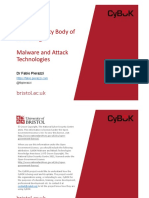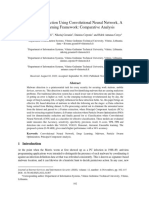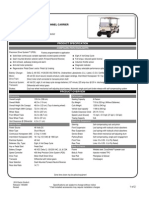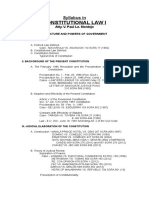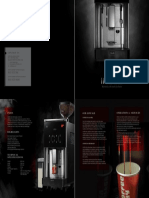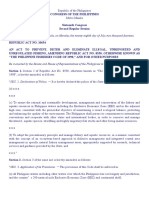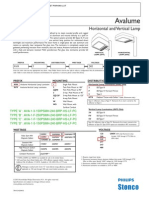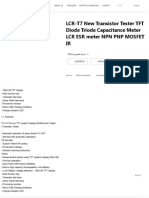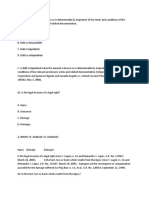1 Introduction
The proliferation of malicious software, or malware, represents one of the most persistent and
economically damaging threats in the digital age. Malware, short for malicious software, refers to
any software intentionally designed to cause damage to computers, servers, clients, or computer
networks. As cybersecurity threats continue to evolve with alarming speed, so too does the
complexity and volume of these malicious programs. In this volatile landscape, the practice of
malware analysis has transitioned from a niche specialty to a vital component in the defense
of all digital infrastructure. The sheer scale of the problem has rendered traditional malware
detection methods, such as those relying on static, signature-based approaches, increasingly
inadequate. These methods, which identify malware by matching it to a database of known
hashes or patterns, struggle to detect novel, or “zero-day,” threats and are easily circumvented
by obfuscation and polymorphism techniques employed by modern adversaries.
As a result, researchers and practitioners have increasingly adopted Artificial Intelligence
(AI) and Machine Learning (ML) techniques to develop more robust and adaptive detection sys-
tems. These advanced models have demonstrated remarkable success, leveraging their ability to
learn complex patterns from vast datasets to identify both known and previously unseen mal-
ware families with high accuracy. Deep Learning (DL) models, in particular, have shown great
promise, learning intricate, low-level features directly from raw data like executable binaries or
network traffic. However, the very complexity that gives these models their predictive power
is also their greatest liability: they are often opaque, functioning as “black boxes.” A security
analyst might receive an alert that a file is malicious, but the model provides no rationale, no
evidence, and no insight into its decision-making process. This lack of transparency creates a
significant “trust gap” and poses severe practical challenges. In a Security Operations Center
(SOC), acting on an unexplained alert is a high-risk proposition. A false positive could lead to
the shutdown of a critical business system, while a failure to understand the context of a true
positive could result in an incomplete and ineffective incident response.
Explainable Artificial Intelligence (XAI) has emerged as a direct and necessary solution
to this problem. XAI is a field of research focused on developing a suite of techniques that
offer mechanisms to make AI decisions more transparent and understandable to human users.
By integrating XAI into malware analysis pipelines, we can transform opaque classifiers into
trusted partners that not only detect threats but also provide the underlying evidence and
reasoning for their conclusions. This report presents a comprehensive academic overview of this
paradigm shift. It begins by examining the modern malware threat landscape and the evolution
of traditional analysis techniques. It then delves into the core methodologies of applying ML
and XAI, including a survey of essential tools, before analyzing the results and tangible insights
gleaned from these explainable systems through real-world case studies. Finally, the report
concludes with an in-depth discussion of the significant open challenges and promising future
directions in the critical and rapidly advancing domain of explainable malware analysis.
2 Literature Review
The academic and practical literature on malware detection reveals a clear and accelerating
evolutionary path, moving from manual, signature-based techniques to the highly automated,
data-driven approaches of today. This evolution has been consistently driven by the escalating
“arms race” between attackers and defenders. The emergence of XAI represents the latest, and
arguably most critical, stage in this progression, shifting the focus from mere detection efficacy
to the transparency, trustworthiness, and actionability of the detection process itself.
Malware poses a severe and multifaceted threat to global cybersecurity, with financial losses
from ransomware, spyware, and data breaches running into the billions of dollars annually. The
rapid proliferation of internet-connected devices (IoT) and the increasing complexity of modern
1
�software ecosystems have exponentially expanded the attack surface available to cybercriminals.
2.1 Common Malware Types
The threat landscape is populated by a diverse taxonomy of malicious software, including
viruses (which attach to other programs), worms (which self-propagate across networks), Tro-
jans (which masquerade as legitimate software), ransomware (which encrypts files for a ransom),
adware (which delivers unwanted ads), spyware (which secretly gathers information), and rootk-
its (which gain privileged access and hide their presence). While their behaviors and targets
vary, all are designed to disrupt, damage, or gain unauthorized access to systems.
2.2 Attack Vectors
Malware is delivered through numerous vectors, including malicious email attachments, “drive-
by downloads” from compromised websites, infected USB devices, and the exploitation of un-
patched software vulnerabilities. Increasingly, sophisticated phishing campaigns and social
engineering tactics are used to trick users into executing the initial payload, underscoring the
need for proactive and intelligent detection that can identify threats beyond simple technical
exploits.
In response to these threats, several analysis paradigms were developed.
2.3 Static Analysis
This is the process of analyzing a file without executing it. An analyst examines the binary or
source code, inspecting components like PE headers, strings, API calls, and instruction patterns
using tools like IDA Pro and Ghidra. Its advantage is safety and speed, but it is easily defeated
by common obfuscation techniques like packing, where the malicious payload is compressed or
encrypted.
2.4 Dynamic Analysis
To counter static analysis limitations, dynamic analysis involves executing the malware in a
controlled sandbox environment to observe its runtime behavior. Tools like Cuckoo Sandbox
monitor system calls, file system changes, network connections, and memory usage. This is
effective against obfuscated threats but is resource-intensive and can be evaded by “sandbox-
aware” malware that detects the virtualized environment.
2.5 Hybrid Analysis
This approach combines static and dynamic methods to provide a more comprehensive view,
leveraging the strengths of both code-level inspection and behavioral analysis.
2.6 Online Malware Detection
Unlike the other methods that analyze a specific file, online detection focuses on real-time
monitoring of an entire live system’s behavior. It aims to detect malicious activity as it occurs
by looking for anomalies in performance metrics like CPU usage, memory consumption, and
network activity. While offering immediate response, it must be carefully tuned to avoid a high
rate of false positives.
The sheer volume of new malware variants (hundreds of thousands per day) made manual
analysis and simple signatures untenable, leading to the adoption of ML.
2
�2.7 Feature-Driven Approaches
Early ML systems relied on features engineered from static and dynamic analysis. This involves
transforming unstructured data (like a binary file) into a structured feature vector that a model
can process. Static features include opcode n-grams, PE metadata, and strings. Dynamic
features include system call traces, registry modifications, and network behavior. The success
of these models is heavily dependent on the quality and relevance of these hand-crafted features.
2.8 Traditional ML Algorithms
Algorithms like Support Vector Machines (SVMs), Random Forests, Decision Trees, and Naïve
Bayes were successfully applied to these feature sets. Decision trees, for instance, were valued
for their inherent simplicity and interpretability, while ensemble models like Random Forests
offered greater robustness and accuracy. However, these models often struggled with the high
dimensionality and sparsity of malware data.
2.9 Deep Learning Approaches
DL models represented a major leap forward by enabling “end-to-end” learning directly from
raw data, reducing the need for feature engineering.
2.9.1 Convolutional Neural Networks (CNNs)
These have been used to identify visual patterns in grayscale image representations of binaries
and to process raw byte sequences directly, as seen in the MalConv architecture.
2.9.2 Recurrent Neural Networks (RNNs)
Especially LSTM and GRU variants, these are ideal for analyzing sequential data like API call
traces, capturing temporal dependencies critical for identifying malicious routines.
2.9.3 Graph Neural Networks (GNNs)
These analyze malware structure, such as control-flow graphs, to detect malicious structural
patterns that other architectures might miss.
The high accuracy of DL models came at the cost of transparency. XAI emerged to address
this critical “black-box” problem.
2.10 Taxonomy of XAI Methods
XAI techniques can be broadly categorized.
2.10.1 Transparent Models
Inherently interpretable models like linear regression or shallow decision trees. They are easy
to understand but often lack the accuracy to model complex malware data.
2.10.2 Post-Hoc Explainability
These techniques are applied to already-trained black-box models. They are essential for inter-
preting high-performance DL models.
3
�Model-Agnostic Methods These can be applied to any ML model. LIME (Local Interpretable
Model-Agnostic Explanations) explains a single prediction by creating a simpler, interpretable
model (e.g., a linear model) that is faithful to the complex model’s behavior in the local vicinity
of that prediction. SHAP (SHapley Additive exPlanations) uses a game-theoretic approach to
fairly distribute the “payout” (the prediction) among the “players” (the features), providing
mathematically sound attributions of each feature’s contribution.
Model-Specific Methods These are tailored to a specific model architecture. For DL, gradient-
based methods are common. Saliency maps and Grad-CAM visualize which input features (e.g.,
pixels in a malware image) most influenced the final decision by analyzing the gradients of the
output with respect to the input.
2.11 Limitations and Evaluation
Despite its benefits, XAI faces limitations. Some techniques are computationally expensive (a
major issue for real-time systems), while others can produce unstable or oversimplified expla-
nations. A key challenge is the lack of a standardized framework for evaluating explanation
quality, which remains a highly active area of research.
3 Methodology
The successful integration of XAI into malware analysis requires a systematic and rigorous
methodology that encompasses the entire lifecycle, from data acquisition to the final evaluation
of model explanations. This process is designed not only to build an accurate detector but also
to ensure its outputs are transparent, reliable, and useful for human analysts.
The foundation of any effective ML-based system is a high-quality, representative dataset.
This phase involves several critical steps:
3.1 Data Acquisition
A comprehensive dataset must include a diverse collection of both malicious and benign samples.
Malicious samples are sourced from public repositories like VirusTotal, MalShare, and VirusBay,
as well as private threat intelligence feeds. Benign samples are typically gathered from clean
operating system installations, reputable software vendors, and common application stores. It
is crucial to use large-scale, modern datasets like EMBER (Endgame Malware BEnchmark for
Research) for Windows PE files or the CICMalDroid dataset for Android, as older datasets may
not reflect the current threat landscape.
3.2 Feature Engineering and Extraction
This is the process of converting raw file data into a structured format suitable for ML models.
The approach depends on the type of analysis.
3.2.1 Static Features
These are extracted without running the code and include PE header fields (e.g., section names,
entropy, import/export tables), byte-level n-grams, opcode sequences from disassembled code,
and embedded strings.
4
�3.2.2 Dynamic Features
These are captured by executing the malware in a sandbox and logging its behavior. This
includes sequences of system calls, API calls, network traffic patterns (e.g., DNS queries, IP
addresses contacted), file system operations (files created/deleted/modified), and registry key
changes.
3.2.3 Hybrid Features
This approach combines both static and dynamic features to create a richer, more comprehensive
feature set that captures both the structural and behavioral aspects of the malware.
3.3 Data Preprocessing and Balancing
Once extracted, features are preprocessed. Numerical features are often scaled or normalized
to prevent features with large magnitudes from dominating the learning process. Categorical
features are converted to a numerical format using techniques like one-hot encoding. A critical
challenge in malware datasets is class imbalance (e.g., far more benign files than malicious
ones). This is addressed using resampling techniques like SMOTE (Synthetic Minority Over-
sampling Technique) to generate synthetic minority class samples or by using cost-sensitive
learning algorithms that penalize misclassifications of the minority class more heavily.
With a prepared dataset, the next step is to select and train a suitable ML/DL model.
3.4 Model Selection
The choice of architecture is guided by the feature set. For structured, high-dimensional feature
vectors, tree-based ensemble models like Random Forest or Gradient Boosting Machines (e.g.,
XGBoost) are powerful choices. For raw byte sequences or image representations of malware, a
CNN is typically employed. For sequential data like API call traces, an RNN or LSTM is the
preferred architecture.
3.5 Training Protocol
The dataset is rigorously partitioned into three sets: a training set used to train the model’s
parameters, a validation set used to tune the model’s hyperparameters (e.g., learning rate,
number of layers) and prevent overfitting, and a test set, which is held out until the very end
and used to provide an unbiased evaluation of the final model’s performance on unseen data.
This strict separation is crucial for ensuring that the model can generalize to real-world threats.
Once a trained model is in place, XAI techniques are applied to interpret its predictions.
The choice of XAI method is tied to the model architecture and the desired explanation format.
3.6 Explanation Generation
For Black-Box Models (e.g., Deep Neural Networks, Gradient Boosting): Model-agnostic tools
like LIME and SHAP are applied. For a given prediction, LIME would generate a local, linear
approximation, highlighting the features that were most influential in that specific instance.
SHAP would provide a more precise quantification of each feature’s contribution, both positive
and negative, to the final prediction score.
For CNN-based Models: Gradient-based, model-specific methods like Grad-CAM are used.
When a malware sample represented as an image is fed into the CNN, Grad-CAM produces a
heatmap that overlays the original image. This heatmap visually highlights the pixels (and thus,
the corresponding bytes or code sections) that the model focused on to make its classification,
providing a highly intuitive visual explanation.
5
� The final and most crucial stage is the evaluation of the entire system, with a focus on the
utility of the explanations.
3.7 Evaluation and Iterative Refinement
3.7.1 Quantitative Evaluation
The model’s predictive performance is assessed using standard metrics like Accuracy, Precision,
Recall, F1-Score, and AUC-ROC. The explanations are evaluated using metrics like fidelity and
robustness.
3.7.2 Qualitative (Human-in-the-Loop) Evaluation
This involves conducting user studies with cybersecurity professionals. Analysts are presented
with the model’s predictions and the corresponding XAI explanations and are asked to perform
tasks such as malware triage or classification. Their performance, trust in the system, and
feedback on the clarity and actionability of the explanations are measured.
This evaluation is not a one-off process. It forms an iterative refinement loop. Insights
from the XAI analysis—such as the discovery that the model is relying on a non-robust feature
or a bias in the dataset—are fed back into the earlier stages. This might lead to improved
feature engineering, data cleaning, or even a complete change in the model architecture. This
continuous loop of training, explaining, evaluating, and refining is what leads to the development
of truly effective and trustworthy AI-driven security solutions.
3.8 Analysis Tools
A core part of the methodology involves selecting the appropriate tools for each stage of analysis.
The cybersecurity landscape offers a diverse arsenal of specialized tools.
3.8.1 Static Analysis Tools
IDA Pro The industry standard interactive disassembler and debugger, offering powerful code
exploration and analysis capabilities.
Ghidra A free and open-source alternative to IDA Pro developed by the NSA, featuring a
powerful decompiler and collaborative analysis features.
PEStudio A tool for Windows executables that provides rapid insights into PE file headers,
sections, imports, and known indicators of compromise.
strings / BinText Basic utilities for extracting readable text sequences from binaries, often
revealing hardcoded IPs, URLs, or commands.
3.8.2 Dynamic Analysis Tools (Sandboxes)
Cuckoo Sandbox A widely-used, open-source automated malware analysis system that exe-
cutes files in an isolated environment and generates detailed reports on their behavior.
Joe Sandbox A commercial, advanced sandbox offering superior evasion detection and cross-
platform support for Windows, Android, and macOS.
Any.Run An interactive online sandbox that allows analysts to interact with the virtual en-
vironment in real-time, crucial for triggering behavior in user-aware malware.
6
�3.8.3 Memory and Forensic Tools
Volatility Framework The leading open-source framework for analyzing volatile memory (RAM)
dumps, capable of revealing hidden processes, injected code, and fileless malware artifacts.
Rekall Another powerful memory forensics tool optimized for speed and live memory acquisi-
tion, often used in incident response.
FTK Imager A tool used to create forensically sound images of disks and memory, preserving
evidence integrity.
3.8.4 Platform-Specific Tools
For Android Tools like APKTool (for decompiling APKs), MobSF (Mobile Security Frame-
work, for automated static/dynamic analysis), and DroidBox (for dynamic analysis) are essen-
tial.
For Linux Tools often focus on system integrity and monitoring, such as rkhunter and chk-
rootkit (for rootkit detection), and Falco (for container runtime security).
3.8.5 Online and Network Tools
VirusTotal The most well-known online platform, which aggregates scan results from over 70
antivirus engines.
Wireshark The quintessential network protocol analyzer for inspecting captured network traffic
to identify C2 communication or data exfiltration.
Zeek (formerly Bro) A network analysis framework that provides high-level, structured logs
of network activity, invaluable for post-event analysis.
4 Result Analysis
The application of XAI techniques to malware detection models has produced compelling results
that extend far beyond improving model accuracy. The analysis of findings across numerous
studies reveals a consistent pattern: XAI provides critical, actionable insights that enhance
threat understanding, validate model behavior, and pave the way for more robust defenses.
One of the most significant results of applying XAI is the demystification of the complex
decision-making processes of black-box models. XAI techniques effectively serve as a translator
between the model’s mathematical operations and human-understandable concepts.
4.1 Feature Attribution in Android Malware
In the domain of Android malware, where detection often relies on features like permissions and
API calls, XAI has proven invaluable. Studies using SHAP have successfully identified not just
individual suspicious permissions but the combinations of permissions that are most indicative of
malicious behavior (e.g., the combination of READ_CONTACTS, SEND_SMS, and INTERNET access).
This allows analysts to understand the intent of the malware (e.g., data exfiltration and premium
SMS fraud) rather than just flagging a permission as suspicious in isolation. This is a level of
insight that a simple feature importance list cannot provide.
7
�4.2 Visualizing Critical Code Sections in Windows Malware
For Windows PE malware, particularly when analyzed using CNNs on image representations,
XAI has delivered powerful visual results. Techniques like Grad-CAM produce heatmaps that
highlight the specific regions of the executable binary that the model found most influential. For
example, analysis has shown that models often focus on the .text section (which contains the
executable code), the import address table (which lists required system functions), or specific
high-entropy regions indicative of packed or encrypted data. For a reverse engineer, this visual
guidance is extremely valuable, allowing them to immediately focus their manual analysis on
the most critical parts of a large and complex binary. The case study of the Cylance AI engine
demonstrated that its model was effective precisely because it learned to identify such structural
anomalies in executables, a fact that was later validated and explained using XAI tools.
XAI serves as a powerful auditing tool, allowing researchers to validate that a model is
learning genuine malicious patterns rather than exploiting spurious correlations or artifacts in
the training data.
4.3 Uncovering Dataset Bias
Research has shown that some ML models achieve impressively high, yet misleading, accuracy
scores. XAI has been used to reveal that these models were not learning the essence of malware
but were instead overfitting to “concept drift” or dataset-specific artifacts. For example, a
model might learn that older benign files are always safe and newer files with certain compiler
signatures are malicious, a shortcut that would fail completely in a real-world scenario. XAI
exposes this flawed reasoning by showing that features related to file age or compiler version
are being given undue weight.
4.4 Case Study: WannaCry Ransomware
In the analysis of the WannaCry attack, traditional signature-based AV failed. Later, ML
models were trained to detect it based on its behavior. XAI tools were instrumental in explaining
why these ML models were effective. The explanations revealed that the models had learned to
flag processes with specific patterns of high-frequency disk writes (indicative of file encryption)
and outbound SMB scanning on port 445 (indicative of its worm-like propagation), providing
concrete, understandable evidence for the detection.
XAI provides a unique, dual-use capability in the context of adversarial machine learning.
It simultaneously reveals how a model can be attacked and how it can be defended.
4.5 Identifying Model Blind Spots
By highlighting the features a model relies on most, XAI effectively provides a roadmap for an
attacker. Research has demonstrated that adversarial attacks guided by XAI explanations are
far more effective than random perturbation attacks. For instance, by using SHAP to identify
the most influential bytes in a PE file, an attacker can make minimal modifications to those
specific bytes to flip the model’s classification from “malicious” to “benign” while preserving
the malware’s functionality.
4.6 Building More Resilient Defenses
Conversely, defenders can use these same insights to strengthen their models. If XAI reveals
that a model is overly reliant on a single, easily manipulated feature (like a specific string),
developers can retrain the model with techniques that encourage it to learn from a more diverse
and robust set of features. This leads to the development of models that are inherently more
resilient to adversarial evasion attempts.
8
� The practical value of these results is best illustrated through real-world case studies.
4.7 WannaCry Ransomware (2017)
This global attack highlighted the failure of signatures. Post-attack, ML models trained on
behavioral data (e.g., file system activity, network scanning) proved effective. XAI tools like
SHAP were then used to explain these models’ success, confirming that they had correctly
learned to associate high-volume file encryption and SMB port scanning with the threat, thus
building trust in these new AI-driven defenses.
4.8 Android Malware (Joker and HummingBad)
These notorious malware families infiltrated the Google Play Store by masquerading as benign
apps. Detection relied on static analysis of permissions and dynamic analysis of behavior. XAI
was crucial in moving beyond simple rules. Explainable models helped analysts determine that
it was not just one suspicious permission, but a specific combination of permissions (e.g., SMS
access, contact list access, and internet access) that was the strongest indicator of malicious
intent, allowing for the creation of more precise vetting filters.
4.9 AI-Based Antivirus (Cylance)
Cylance was a pioneer in using an ML model at the core of its antivirus engine. It analyzed byte-
level features to find structural anomalies, proving effective against zero-day threats. However,
its black-box nature initially caused hesitation among users. The company later integrated
explainability features that would show which structural aspects of a file (e.g., header anomalies,
high-entropy sections) contributed to its malicious classification, bridging the trust gap with its
customers.
4.10 PDF-Based Malware Analysis
Malicious PDFs often exploit the format’s complexity to hide scripts. ML models have been
trained on structural PDF features (e.g., object tree depth, presence of /JavaScript actions).
XAI techniques assist analysts by highlighting the specific, often obscure, elements—such as
a high-entropy embedded stream or unusual metadata—that contributed most to the model’s
decision to flag the document as malicious.
Across these diverse applications, a consistent theme emerges: XAI transforms the malware
detector from a tool that provides an answer into a system that facilitates a deeper under-
standing of the threat itself, thereby empowering human analysts and strengthening the overall
security posture.
5 Discussion
The integration of Explainable Artificial Intelligence (XAI) into malware analysis is not merely
an incremental improvement; it represents a fundamental shift in how we approach AI-driven
cybersecurity. By prioritizing transparency alongside accuracy, XAI addresses the core lim-
itations that have hindered the widespread adoption and trust of complex machine learning
models in security-critical operations. The implications of this shift are far-reaching, impact-
ing everything from the daily workflow of security analysts to the strategic development of
next-generation defense systems. However, while the promise of XAI is immense, its practical
implementation comes with a unique set of challenges and opens up new frontiers for research.
The most immediate impact of XAI is on the human element of cybersecurity. For a SOC
analyst, XAI bridges the critical gap between detection and response. An unexplained alert
9
�from a black-box system is a point of ambiguity that requires time-consuming manual investi-
gation to validate. An explainable alert, in contrast, provides immediate context and evidence.
For example, if a model flags a document as malicious, an XAI explanation showing that the de-
tection was triggered by an embedded, obfuscated JavaScript payload that attempts to connect
to a known malicious domain allows the analyst to instantly confirm the threat and escalate
the response. This builds trust in the automated system, reduces alert fatigue, and enables
analysts to focus their expertise on high-level strategic tasks rather than low-level validation.
For threat hunters and reverse engineers, XAI acts as a powerful force multiplier, guiding their
investigation towards the most pertinent parts of a binary or the most anomalous behaviors in
a system trace, drastically reducing analysis time.
Despite its benefits, the path to deploying robust and reliable XAI in real-world security
systems is fraught with challenges.
5.1 Computational Overhead and Scalability
Many powerful XAI techniques, particularly model-agnostic methods like SHAP that require
extensive sampling, are computationally expensive. This can make them impractical for real-
time detection systems that need to process thousands of events per second. The performance
cost of generating an explanation for every single prediction is often prohibitive, creating a
trade-off between complete transparency and operational efficiency.
5.2 The Fidelity-Interpretability Trade-off
There is often an inherent tension between the accuracy of an explanation (its fidelity to the
original model) and its simplicity (its interpretability for a human). A highly faithful explana-
tion of a very complex model might itself be too complex for an analyst to understand quickly.
Conversely, an oversimplified explanation may omit crucial details and fail to accurately repre-
sent the model’s true reasoning, potentially leading to a false sense of understanding.
5.3 Robustness and Reliability of Explanations
Explanations themselves are not infallible. Research has shown that they can be unstable,
with small, semantically irrelevant perturbations to an input causing drastic changes in the
explanation. Furthermore, the concept of “adversarial explanations” is an emerging threat,
where an attacker could craft a malicious file designed not to evade detection, but to produce
a misleading explanation that sends analysts on a wild goose chase, thereby masking the true
nature of the attack.
5.4 Lack of Ground Truth and Standardized Evaluation
Evaluating the “correctness” of an explanation is inherently difficult. Unlike a model’s predic-
tion, for which a ground truth label (malicious or benign) exists, there is no objective ground
truth for an explanation. This makes evaluation heavily reliant on subjective, time-consuming
human studies and has hindered the development of standardized benchmarks to rigorously
compare different XAI methods.
The challenges facing XAI in malware analysis also define its most promising avenues for
future research.
5.5 Developing Lightweight, Real-Time XAI
A critical area of research is the creation of new explanation algorithms that are computationally
efficient enough to be deployed in high-throughput environments. This could involve developing
10
�faster approximation techniques for methods like SHAP or designing new model architectures
that have built-in, low-cost explainability features.
5.6 Inherently Interpretable Yet Accurate Models
While much of the focus has been on post-hoc explanations for black-box models, a parallel
research track should focus on designing new classes of models that are inherently transparent
without sacrificing the high accuracy of deep neural networks. This remains a “holy grail” of
XAI research.
5.7 Human-Centric and Interactive Explainability
Future XAI systems should move beyond static, one-off explanations. Research into interactive
explanation interfaces would allow an analyst to “dialogue” with the model, asking follow-up
questions, testing counterfactual scenarios (“What if this feature were different?”), and drilling
down into explanations at various levels of granularity.
5.8 Proactive XAI for Security by Design
XAI should be used not just as a post-hoc analysis tool but as an integral part of the model
development lifecycle. By using XAI to identify and understand potential vulnerabilities and
biases during training, developers can build models that are more robust, fair, and secure from
the ground up.
5.9 Cross-Domain and Platform-Specific XAI
While much research has focused on Windows and Android, there is a growing need to develop
and validate XAI techniques for other critical domains, including IoT devices, industrial control
systems (ICS), and complex cloud-native environments, each of which presents unique data
types and security challenges.
In conclusion, XAI is fundamentally reshaping the landscape of AI-driven malware analy-
sis. It is moving the field from a focus on pure predictive power to a more holistic approach
that values transparency, trustworthiness, and human-machine collaboration. While significant
technical and conceptual hurdles remain, the continued pursuit of explainability is not just
an academic exercise; it is an essential requirement for building the intelligent, resilient, and
dependable cybersecurity systems of the future.
11




















